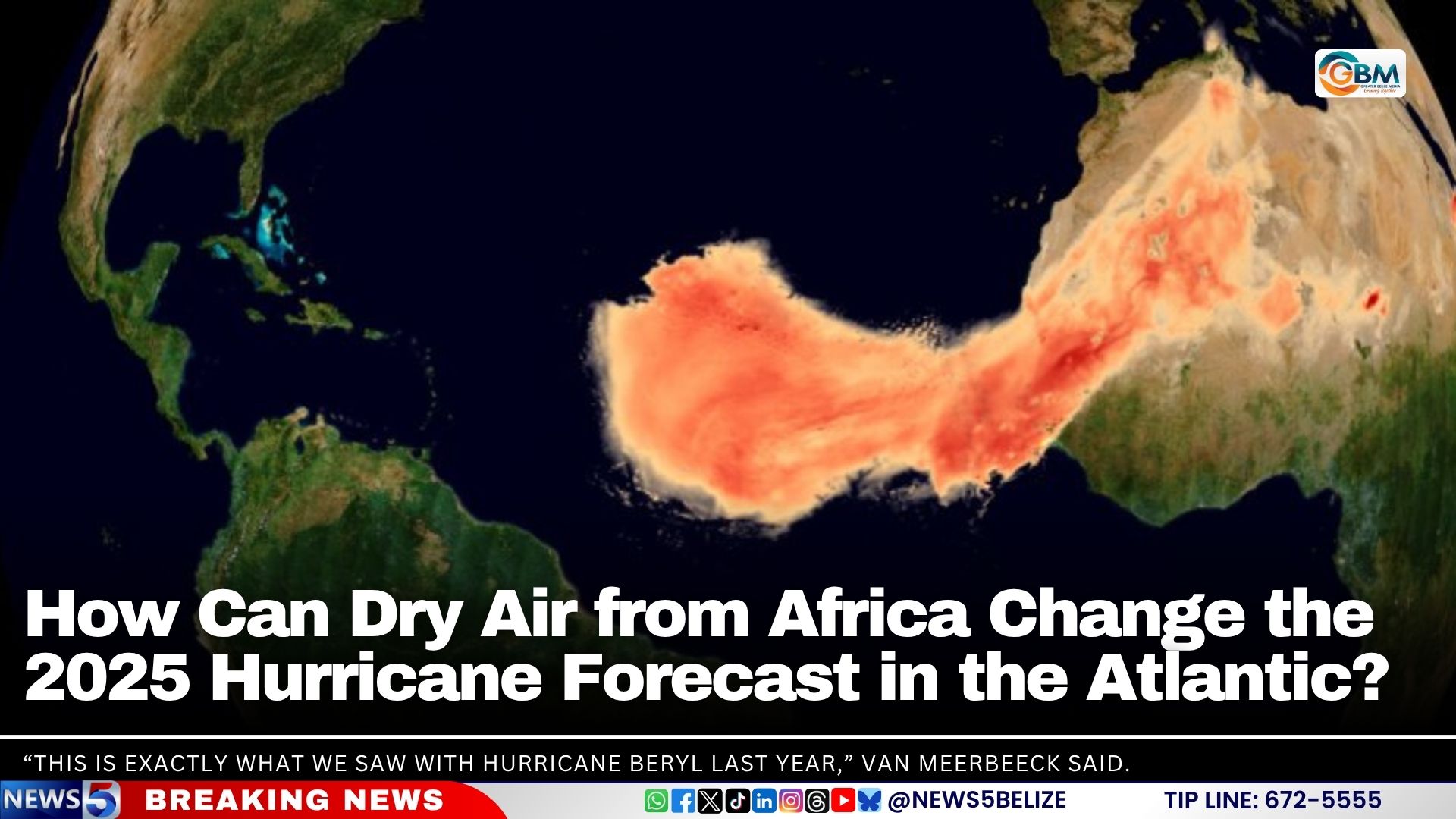Can dust from the Sahara Desert, thousands of kilometers away, really influence the Atlantic hurricane season? Regional forecasters say yes. In 2025, it could be a major factor in determining whether the Caribbean experiences a lull or a surge in dangerous storms.
Every year, vast clouds of fine, dry particles, known as Saharan dust, are lifted from Africa’s Sahara Desert by strong winds and carried across the Atlantic Ocean. It’s that noticeable haze in the sky one tends to see from mid-June to mid-August. These dust plumes travel more than 5,000 miles westward during the summer months, reaching the Caribbean and even parts of the Americas.
This phenomenon, also known as the Saharan Air Layer (SAL), consists of an extremely dry, dusty mass of air, typically 2 to 2.5 miles thick, floating about a mile above the ocean surface.
Cédric Van Meerbeeck, a climatologist at the Caribbean Institute for Meteorology and Hydrology (CIMH) in Barbados, says the Saharan Air Layer is one of the biggest unknowns this season. “What we do not know is how often those intrusions of the Saharan Air Layer will come into the Caribbean and therefore stifle the activity levels,” he said, adding that once the dust clears, the hot ocean waters beneath can fuel rapid storm development.
“This is exactly what we saw with Hurricane Beryl last year,” Van Meerbeeck said. “It formed in a break between dust episodes and intensified rapidly.”
So why does Saharan dust suppress storms? According to the National Hurricane Center, the “Saharan dust” contains about 50% less moisture than the typical tropical atmosphere. This extreme dryness promotes downdrafts, creating conditions that can suppress the formation and intensification of tropical storms.
The 2025 forecast is already calling for an active season, with 19 named storms, nine hurricanes, and four major hurricanes expected, numbers well above the long-term average. While early-season activity may be stifled by dust, Van Meerbeeck warns the latter half could be far more active.
Beyond its influence on storms, Saharan dust also affects health and the environment. The fine particles can irritate the eyes, ears, nose, and throat, and they pose particular risks for individuals with allergies or respiratory conditions such as asthma or chronic bronchitis.
During dust events, it’s advisable for vulnerable individuals to remain indoors and use allergy medications as needed.
Understanding how Saharan dust interacts with tropical storm systems is crucial for accurate forecasting and preparedness. “The first half, we don’t know for sure yet, because it will depend on Saharan air layer intrusions,” Van Meerbeeck said. “What we need to remember is that especially the second half of the season has a higher chance to be really active.”
